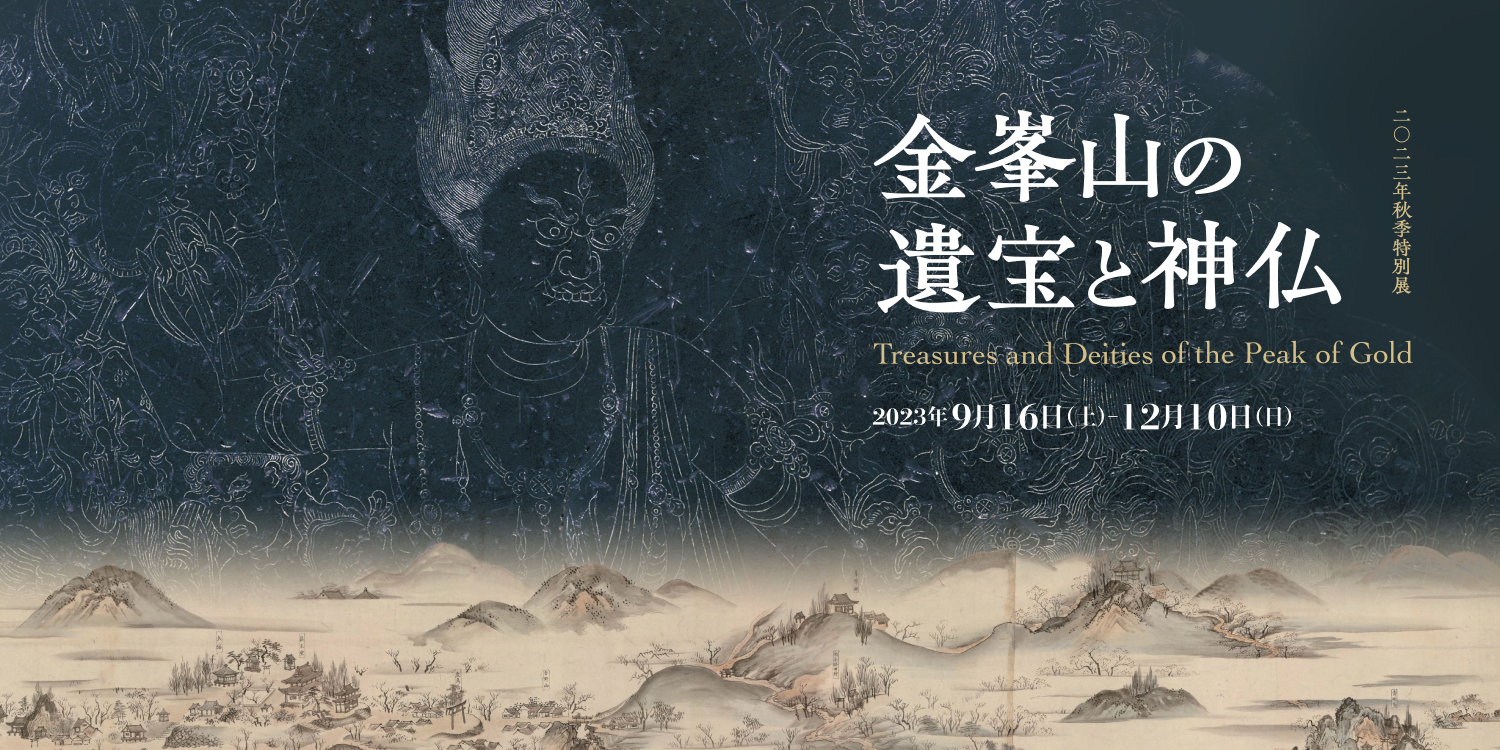Autumn Special Exhibition

Note: This exhibit has closed.
Please note that this information pertains to an exhibition that has closed.
“Kinpusen”—the Peaks of Gold—are mountains thought to be the abode of the divine—a place of secrets, of legends, and of religious piety and faith. Kinpusenji Temple at the foot of the mountain, and Ōminesanji Temple on the mountaintop, both said to be founded by the mountain ascetic known for his superhuman powers, En no Gyōja, have halls mountain dedicated to Zaō Gongen, a local kami deity believed to be the manifestation of a Buddhist deity. These temples, where statues of Zaō Gongen are the principal objects of worship, have long been centers of faith for practitioners of ancient mountain worship.
En no Gyōja is said to have been active in the seventh century. We do not know what Kinpusen was like in his time, and apparently its religious sites went into decline for a time, until they were revived in the Heian period (ninth to twelfth centuries) by the Shingon school priest, Shōbō, and became a place of frequent pilgrimages by members of the Heian nobility. Buddhism had been introduced to Japan in the sixth century and become well established. By the late Heian period, however, people came to believe that theirs was the time known in Buddhist belief as the “Latter Day of the Law” (mappō). According to the teachings, there were three periods after the death of Shakyamuni Buddha: one thousand years when the true Dharma (Buddhist teachings) was practiced, one thousand years when Buddhism would become formalistic and in name only, and then the Latter Day of the Law would begin and the world would fall into evil and chaos. It was said that the year 1052 was to be the onset of that decadent age. Determined to be prepared for mappō, pious members of the Heian aristocracy sought to assure their rebirth in the Pure Land, or Buddhist heaven, by performing acts of merit. It became fashionable among the elite to copy the Buddhist sutras and bury them, suitably encased in gilt-bronze containers, at the sacred mountain, Kinpusen. The powerful noble Fujiwara no Michinaga (966–1028) was one who in 1007 made the pilgrimage to the mountaintop where he buried sutras he had copied himself in a metal container. Retired emperors and other members of the nobility followed suit, copying sutras and preparing them for burial in sutra mounds at the mountain’s sacred site.
The shrines and temples built at Kinpusen went into decline or burned down time and again, and a great deal of the legacy of their faith, was scattered and lost. Since the time when Kinpusen became known for its buried treasures back in the Meiji era (1868–1912), numerous surveys have been conducted and the artifacts found described and catalogued. Archaeological excavation undertaken at the time of the dismantling and repair of the Ōminesanji mountaintop main hall led to discovery of more artifacts and records. This exhibition shows something of the results of these efforts and also presents sculpture, painting, and craftwork that testify to the Kinpusen faith.
The Yoshino mountains stretch south of where the Kyoto and the other ancient capitals were located. Stories and landscapes of Yoshino are immortalized in diaries and other writings, and in paintings and works of art and craft, imbuing the region with romance and a sense that it is a kind of homeland of the Japanese spirit. This exhibition brings back to life part of the vast heritage that sleeps within those mountains, giving us today the chance to slip into the world of the ancients and gain a glimpse of their aspirations and conceptions of the divine.
Information
- Exhibition Term
- September 16, 2023 - December 10, 2023
- Venue
- North Wing
※Objects are subject to change during exhibition period.
Exhibits
North Wing
Autumn Special Exhibition
Treasures and Deities of the Peak of Gold
Please click here for the list of works.